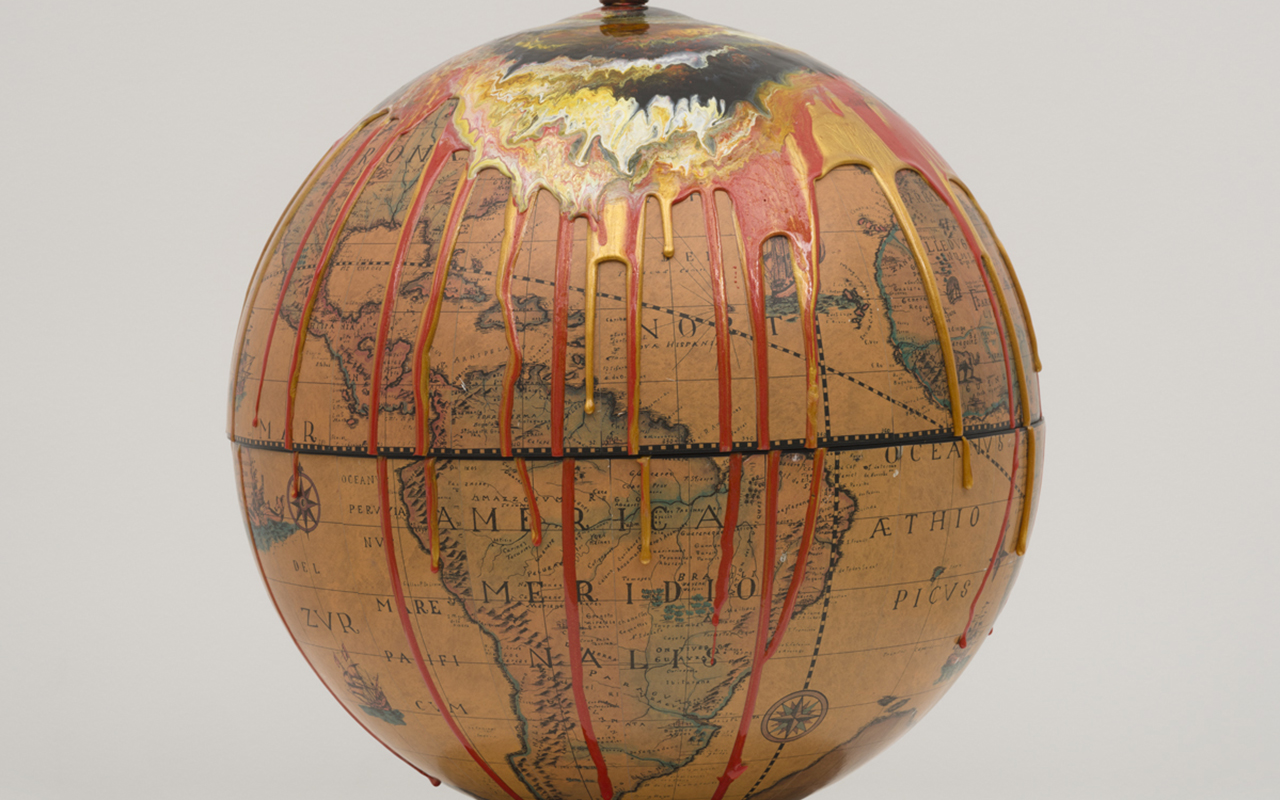
[ad_1]

From the title of Sharon Mizota’s article “Asian-American Art Is Plagued by Generational Amnesia,” published in Hyperallergic on March 19, through the many paragraphs where she describes her feelings of being upset and her general anxiety around Asian American issues, I feel that her writing does Scratching at the Moon (SATM), an exhibtion I’ve co-curated with Anne Ellegood at the Institute of Contemporary Art, Los Angeles, a real disservice. For Mizota, writing about SATM is “an excuse to think through these issues,” but the show is then used in misleading ways from start to finish in an effort to substantiate the article’s thesis.
While Asian-American Art may be “plagued by generational amnesia,” Scratching at the Moon definitely is not. Scratching at the Moon is an intergenerational show tracing specific ways in which artists have mentored and inspired one another. According to Mizota, the assertion that SATM is “the first focused survey of Asian-American artists in a major Los Angeles contemporary art museum,” as stated in the exhibition’s press materials, “minimizes the history of exhibitions of contemporary art by Asian Americans” in Los Angeles, and three shows from the past 20+ years are used as examples to set up Mizota’s thesis about “generational forgetting.” Mizota misses or ignores the fact that two of these three shows included four of the artists in SATM, including me, the co-curator of this exhibition and a participating artist. One of the artists in SATM, Yong Soon Min, to whom Mizota’s article is dedicated, co-curated one of these three shows; the article names Min as a co-curator of Humor Me, but the fact that she is also part of SATM is missed or ignored. The organizers and artists of SATM did not forget these shows; these shows are part of the rich stream that created SATM.
Regarding “generational amnesia,” in the art world, Asian American histories are often not valued or shared. That is why tracing and revealing these histories is necessary and why SATM came to be. I am troubled by Mizota’s claim that artist Amy Yao acknowledged in a panel that “a certain amount of generational forgetting has occurred.” Yao’s words were very much taken out of context in Mizota’s article. Yao was speaking about the gaps of knowledge between generations and how SATM could be seen as an opportunity to bridge the gap. Yao has been teaching for over a decade and maintains a rigorous research practice in order to feed her students information about art from diverse perspectives. For most of the artists in SATM, their teaching remains a vital mode of passing information to the next generation of thinkers. This fact is spelled out in the exhibition press materials and catalog.
Mizota’s article notes disapprovingly that calling SATM a “first” on the museum website might serve as a “selling point for securing funding,” and implies that it will attract funding “at the expense of the smaller, community-led organizations.” She may be unaware that SATM co-curator and ICA executive director Anne Ellegood has been an active member of the Los Angeles Visual Arts Coalition (“LAVA”) since its inception in March 2020. Born out of the same pandemic moment as AAPI Arts Network, LAVA has designed and implemented a collective fundraising model for small and mid-sized arts organizations in Los Angeles inspired by an ethos of mutual aid. LAVA has raised and distributed many thousands of dollars to over 30 local member organizations, ranging from small and mid-sized non-profits, such as JOAN, to artist-run spaces such as Human Resources LA.
The fact that SATM is a “first” was identified by scholar and curator John Tain in the course of his research for an essay for the SATM catalog, and Mizota’s article recognizes that this discovery “seems unbelievable, but it is true.” The bulk of the article is concerned with questioning and criticizing the museum’s decision to include this fact on the museum website. It seems like a lot of hot air toward a very narrow end, but that would miss the greater impact of the article: an eye-ball grabbing headline with a thesis that is never substantiated, and that serves to obscure the hard work and intentionality that SATM brought to exploring Asian American histories and forging new cross-generational connections.
Back to the question, “why continue to build a separate art history based on an exceedingly leaky racial category?” While I feel that I am often regarded as an artist first, rather than as Asian, I also don’t want my Asian-American identity to go unrecognized. That would mean so much assimilation as to disappear altogether in a different way. In the 1980s in grade school, my Asianness was exoticized and I resented that. In the 1990s, when the culture attempted to be post-race, where ethnicity was not supposed to matter anymore, other problems were exacerbated such as the problem of cultural appropriation. In the 2020s and in Scratching at the Moon, the use of the term Asian American serves to explore allyship and mutual acknowledgment and care.
After Mizota’s essay and Alex Paik’s review of SATM for Hyperallergic, Ellegood and I are considering a possible panel discussion about group shows with an organizing principle using identity, whether racial, ethnic, cultural, or gender-related. There happen to be several identity-based group shows currently on view in LA: Latinx artists at Jeffery Deitch Gallery, Korean experimental art at the Hammer Museum, and an update to Charles Gaines’s 1993 show The Theater of Refusal: Black Art and Mainstream Criticism at Hauser and Wirth. It seems that issues of identity are in need of being discussed again in new ways that inhabit the complexities of our present time.
Related
[ad_2]